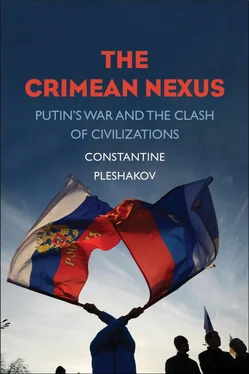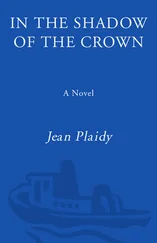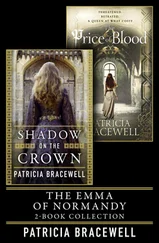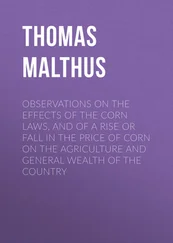Constantine Pleshakov
THE CRIMEAN NEXUS
Putin’s War and the Clash of Civilizations
Mordarka
(blessed are the gentle)
INTRODUCTION
Green Isle, Paradise Lost
Not everyone can find the Crimean peninsula on a map, but once you do, its shape, like that of Italy, is hard to forget. Variously compared to a leaf, a stingray, a pendant, and an eagle, it barely touches on the continent, protruding with almost perfect geometrical precision into the center of the Black Sea.
The thin stem making Crimea not an island is called Perekop Isthmus. The Black Sea squeezes it from the west, and Sivash, a bay of the Sea of Azov, from the east. Sivash is not really a bay but rather a shape-shifting conglomerate of lakes, islets, and shoals about forty miles wide whose silt, salt, and mud contours have changed numerous times within human memory.
The road to Kiev runs through Perekop, a bottleneck only four miles wide—roughly the distance between Fourteenth and Ninety-sixth streets in Manhattan. The other dry-land connection to the mainland is a short man-made bridge across the Sivash; that road takes you to Moscow. Close the two connections, and Crimea would effectively become an island.
Entering Crimea is a joy. One moment you are on the plowed-up steppe, enduring five hours of monotony by train or car; then, in a split second, you are on a thin strip of land, barely wide enough to support the road, and there are sea bays all around, as far as the eye can see. The pink, blue, and green coves, flats, shoals, and promontories are all hazy, uncertain, tentative; ebbing and flowing. In a moment you start actually smelling the haze. God help you if your train slows down or your car stalls, because Sivash emits sulfur dioxide. In plain language, it reeks. The Turkic name Sivash means “dirt”; in Slavic languages, the bay is equally uncharitably but realistically known as Gniloye More—the Rotten Sea.
Once past Sivash, you find yourself back on the steppe, not quite distinguishable from the one you left half an hour before; perhaps it looks a shade softer and greener, but that may be only your expectant mood, a result, in the words of an early traveler, of “those paradisiacal ideas” you had formed of the peninsula’s beauty. Here the peninsula swells, its two wings unfolding, the western to Cape Tarkhankut, the eastern to Kerch Strait; to the south there are mountains, and beyond them the subtropical South Shore, the area you are very likely headed toward, because that’s what most people come to Crimea for: the glittering resort town of Yalta, and the naval legend, the City of the Russian Glory, Sevastopol. [1] Ebenezer Henderson, Biblical Researches and Travels in Russia; Including a Tour in the Crimea and the Passage of the Caucasus (London: James Nisbet, 1826), 291.
Not terribly tall—a mile at most—the Crimean Mountains are still not to be taken lightly. Erosion of the limestone they are made of has turned the range into a wall. Of the three roads traversing it, two are closed by the snow between November and April. A trekker has more options, but those are not numerous either: the southern side of the range is a cliff; the few canyons are too rocky and slippery for a human to negotiate comfortably; depending on your definition of a mountain pass, there are three to seven notches, which cannot be discovered without extensive homework or a day or two of painful stumbling around.
The ridge is cut into five plateaus still bearing Greek or Turkic names: Ai Petri, Babughan, Chatyr Dagh, Demerdji, Karabi. These plateaus are separated by gorges, and to get from plateau A to plateau B you have to follow the gorge edge, a detour easily taking half a day. On the plateaus, rain and wind have eaten up most of the soil, leaving a barren surface studded with vertically standing limestone arrows, or “dragon teeth” in local speak. There is no water to be found on the plateaus in summertime, except in caves.
Across the ridge sits the subtropical littoral, commonly referred to as the South Shore: orchards, castles, palaces, whitewashed villages, parks; beaches, fruit markets, sweet wine; sunburn, queues, peddlers, souvenirs, nightlife.
Crimea is fully maritime, and it is possible to chart its past through the stories of the shipwrecks sitting on the seabed around its coasts: Athenian, Roman, Byzantine, Genoese; British in the Crimean War, Soviet in World War II. The sea has had many names, always with some unwelcoming connotation. The name the Greeks gave it, Pontus Axeinos, “Dark,” lives today as Kara Deniz in Turkish, Black Sea in English, Chornoye More in Russian, Chorne in Ukrainian, and Marea Neagra in Romanian. [2] Charles King, The Black Sea: A History (New York: Oxford University Press, 2004), 12.
The Black Sea bottom is largely hydrogen sulfide, like oceans of a planet from a science-fiction story. The “largest mass of lifeless water in the world,” the author of a Black Sea travelogue, Neal Ascherson, called it. Very low in oxygen, the bottom waters support little life, and that makes it an ideal excavation site for marine archeology: organic matter, such as a ship’s hull, decomposes there very slowly, so that artifacts may sit unspoiled for centuries. An unknown scroll covered with Aristotle’s handwriting could still be lying in some shipwreck’s hold, curling in a sealed amphora, the universal container of antiquity. Deep-sea archeology is extremely costly, and so far just one ancient wreck has been recovered, a Byzantine ship off Turkish Sinop. Christened Sinop D, it is supposed to be the best-preserved underwater artifact ever found. [3] Neal Ascherson, Black Sea (New York: Hill and Wang, 1996), 5.
The existence of the hydrogen sulfide layer explains the columns of fire reportedly seen rising from the sea after earthquakes. In 2007, an article in a European scientific journal caused a media splash by arguing that the Black Sea was so combustible that if an asteroid ever hit it, the release of fire and gas would annihilate all life along its coasts. [4] V. Badesku, “Release of Hydrogen Sulfide by Asteroid Impacts in Black Sea and Risks for Inland Human Population,” NCBI , October 2007, www.ncbi.nlm.nih.gov/pubmed/17696133 (retrieved March 5, 2015).
The other sea, the one washing Crimea’s eastern shore, Azov, has mud volcanoes. There, the Byzantine Greeks collected naphtha , a combustible liquid similar to gasoline, to use in hand grenades, remembered famously as “Greek fire.” A nineteenth-century traveler compared the naphtha springs to “the chimneys of the infernal regions, as the crust of the soil is pierced with black holes surmounted by little cones, from whence the mud and gas bubble up together. The whole soil around trembles when walked upon, and one fears to sink into the bowels of the earth.” Perhaps because of the naphtha and the volcanoes, one interpretation of Greek myths puts the entrance to Hades on the Azov Sea. Henry James used the sea as a symbol of absolute evil in The Turn of the Screw . [5] H. D. Seymour, Russia on the Black Sea and Sea of Azof (London: John Murray, 1855), 294; Henry James, The Turn of the Screw and Other Stories (Köln: Könemann, 1996), 122.
Descriptions of Crimea can be found in the texts forming the early Western canon: Homer, Herodotus, Xenophon, Strabo, Pliny. Compared with parts of the eastern Mediterranean such as Peloponnesus or Cyprus, Crimea is not particularly striking, but it is the only chunk of land anywhere near the Mediterranean that Russia and Ukraine have ever owned. Crimea is their only connection to the cradle of the Western world, and this is part of the reason why both nations cling to the peninsula so fiercely.
Читать дальше












